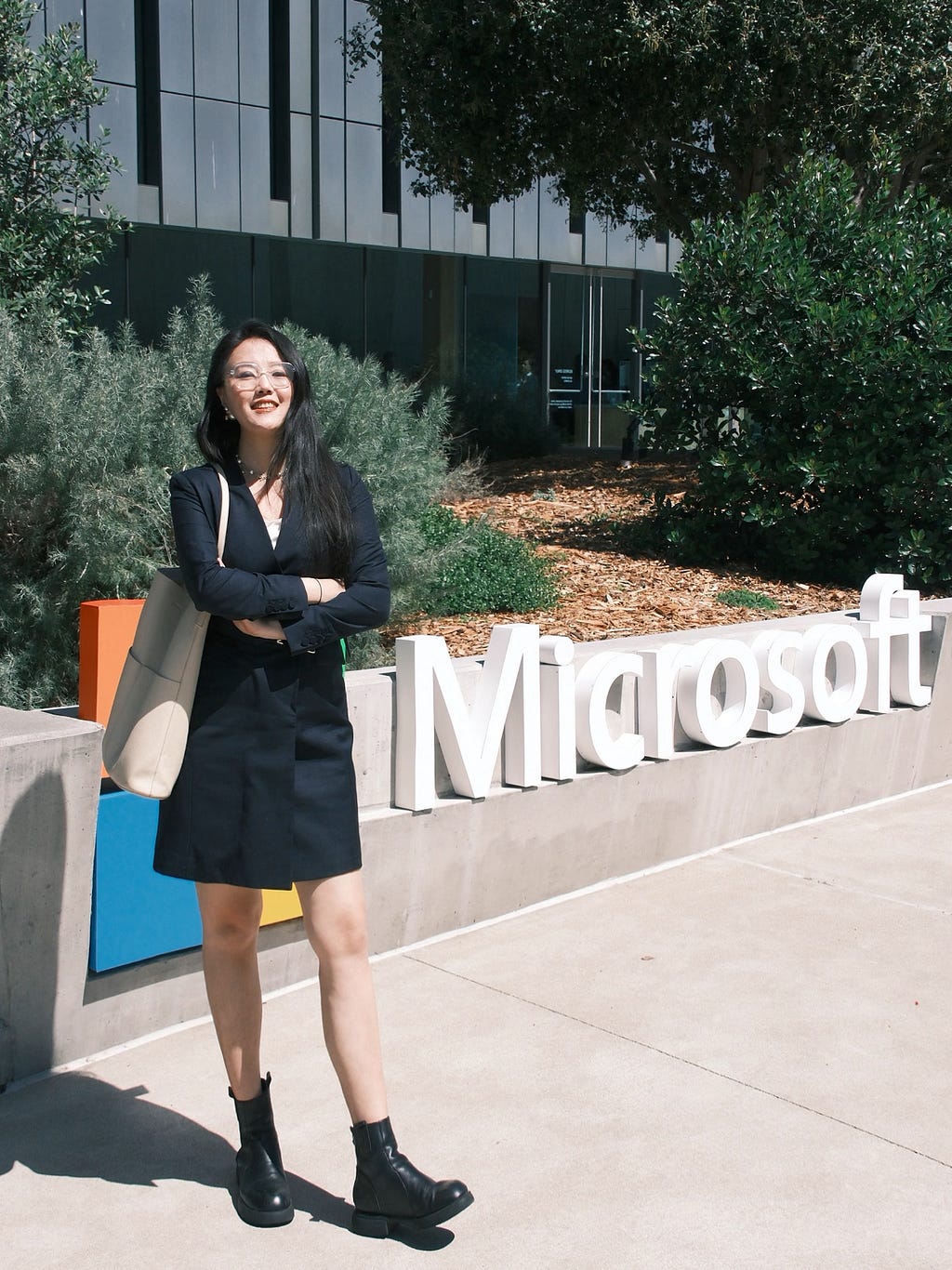No 31. Reflection Of My First Year @ Microsoft As A Principal Product Designer

No 31. Reflection of My First Year @ Microsoft as a Principal Product
Me at the Microsoft Munich office!Time flies. One year ago, I joined Microsoft — my first experience at a big tech company.
If Spotify felt like a startup — fast, scrappy, chaotic but exciting — Microsoft is the opposite end of the spectrum: a super organization with layers, systems, and processes that can feel simultaneously awe-inspiring and overwhelming.
Every day in the AI team feels like a video game boss fight. Tasks that might take a day elsewhere sometimes stretch into three days here, but somehow, I’ve grown faster than ever.
Looking back, this first year taught me more about strategy, leadership, and influence than any past experience — and also humbled me in ways I didn’t expect.
What Does a Principal Actually Do?
When I joined, I discovered I was one of the only two Principals in our group. Pressure? Massive ????.
Some of my reports have more years of experience than me, core business areas are fiercely competitive, and the pace is relentless.
My first thought: Okay… how do I even start?
The answer came down to one thing: clarity.
I needed to understand my manager’s expectations around strategy and leadership, then figure out how to translate a big, abstract “North Star” into concrete, actionable steps. Easier said than done.
Step 1: Draw the Map
The first thing I did was draw a mental (and literal) map of our ecosystem.
I started by:
- Understanding all the product lines and their upstream/downstream dependencies. Who was doing what? Which projects were the highest priority? Where were the bottlenecks?
- Breaking the vision into MVPs and milestones that were tangible.
- Collaborating actively with product managers and engineers — essentially co-creating the roadmap.
One early lesson hit me hard: cross-team collaboration is far more important than being great at executing a single task. In a company this big, influence spreads horizontally, not just vertically.

Step 2: Never Be Invisible
I learned quickly that in a big company, hard work alone isn’t enough. You need visibility.
Some lessons I picked up from my colleagues:
- Don’t have a point in a meeting? Echo someone else’s idea, then add your twist.
- Completed a successful project? Don’t hide it — share it up the chain, but always credit everyone involved.
- Help others, but be seen helping. I often get pinged by other teams for advice — I help them, and make sure my contributions are visible, whether in chat or in meetings.
I realized influence isn’t about what you do, but how many people know you did it.

Step 3: Be Bold, Not Nice
Early on, I was too “nice.” Someone would ask me, “Which option is better, A or B?” and I’d say, “They’re both fine…”
That doesn’t work in a big org. I’ve learned to be bold, decisive, and own my voice:
- When discussions stall, step up and make the call.
- Listen to feedback carefully, but you decide what to implement. Don’t let others lead your decisions.
- Big organizations are inherently ambiguous. There is rarely a perfect answer. Pick a direction, test, iterate quickly. Even a “wrong” decision is better than indecision.
In short: stop being the perpetual yes-person.

Step 4: Learn to Argue — Respectfully
Speaking up is scary at first, but it’s crucial.
- Don’t be afraid to disagree, but express your views calmly and confidently.
- Avoid just agreeing to keep the peace. Thinking critically in multiple dimensions earns respect.
- Become what I like to call a “high-quality skeptic”: someone who has an independent framework for judgment and isn’t afraid to challenge assumptions. Practice debating ideas — it strengthens your voice and influence.
I remember one meeting vividly: two senior engineers were debating a feature approach, and everyone was hesitant. I spoke up, calmly outlined the pros and cons, suggested a hybrid solution — and it got adopted.
That small moment boosted my confidence and reminded me:
Your voice matters!

Reflections From My First Year
Even as a “regular employee” or a manager in a big company, your career isn’t just about grinding through tasks.
Some personal takeaways:
- Strategy is as much about mapping the ecosystem and building influence as it is about execution.
- Visibility matters as much as output. People need to know what you do.
- Boldness beats niceness. Don’t wait for perfect clarity — take action and iterate.
- Respectful disagreement isn’t conflict — it’s a path to credibility and impact.
This year has reminded me that career growth in a large organization isn’t just about skill; it’s about how you navigate complexity, influence others, and create visibility for your work. Even as a “worker bee,” you can take control of your journey. And if you play it right, your first year can be transformative.
 Me at the SVC Bay Area Microsoft office!
Me at the SVC Bay Area Microsoft office!No 31. Reflection of My First Year @ Microsoft as a Principal Product Designer was originally published in UX Planet on Medium, where people are continuing the conversation by highlighting and responding to this story.
Popular Products
-
 Classic Oversized Teddy Bear
Classic Oversized Teddy Bear$25.78 -
 Gem's Ballet Natural Garnet Gemstone ...
Gem's Ballet Natural Garnet Gemstone ...$206.99$85.78 -

-
 Butt Lifting Body Shaper Shorts
Butt Lifting Body Shaper Shorts$80.99$47.78 -
 Slimming Waist Trainer & Thigh Trimmer
Slimming Waist Trainer & Thigh Trimmer$57.99$39.78